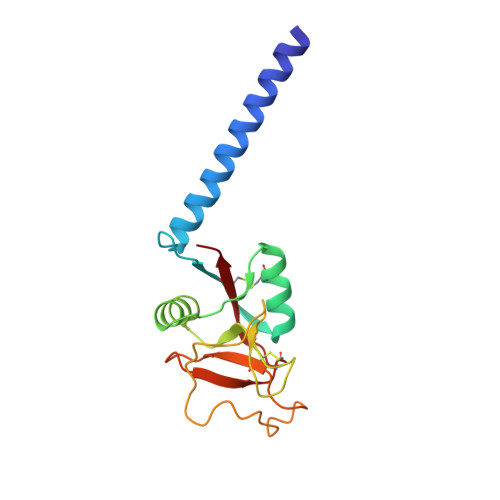Mechanism of pH-dependent N-acetylgalactosamine binding by a functional mimic of the hepatocyte asialoglycoprotein receptor.
Feinberg, H., Torgersen, D., Drickamer, K., Weis, W.I.(2000) J Biological Chem 275: 35176-35184
- PubMed: 10931846
- DOI: https://doi.org/10.1074/jbc.M005557200
- Primary Citation of Related Structures:
1FIF, 1FIH - PubMed Abstract:
Efficient release of ligands from the Ca(2+)-dependent carbohydrate-recognition domain (CRD) of the hepatic asialoglycoprotein receptor at endosomal pH requires a small set of conserved amino acids that includes a critical histidine residue. When these residues are incorporated at corresponding positions in an homologous galactose-binding derivative of serum mannose-binding protein, the pH dependence of ligand binding becomes more like that of the receptor. The modified CRD displays 40-fold preferential binding to N-acetylgalactosamine compared with galactose, making it a good functional mimic of the asialoglycoprotein receptor. In the crystal structure of the modified CRD bound to N-acetylgalactosamine, the histidine (His(202)) contacts the 2-acetamido methyl group and also participates in a network of interactions involving Asp(212), Arg(216), and Tyr(218) that positions a water molecule in a hydrogen bond with the sugar amide group. These interactions appear to produce the preference for N-acetylgalactosamine over galactose and are also likely to influence the pK(a) of His(202). Protonation of His(202) would disrupt its interaction with an asparagine that serves as a ligand for Ca(2+) and sugar. The structure of the modified CRD without sugar displays several different conformations that may represent structures of intermediates in the release of Ca(2+) and sugar ligands caused by protonation of His(202).
- Department of Structural Biology, Stanford University School of Medicine, Stanford, California 94305, USA.
Organizational Affiliation:


















